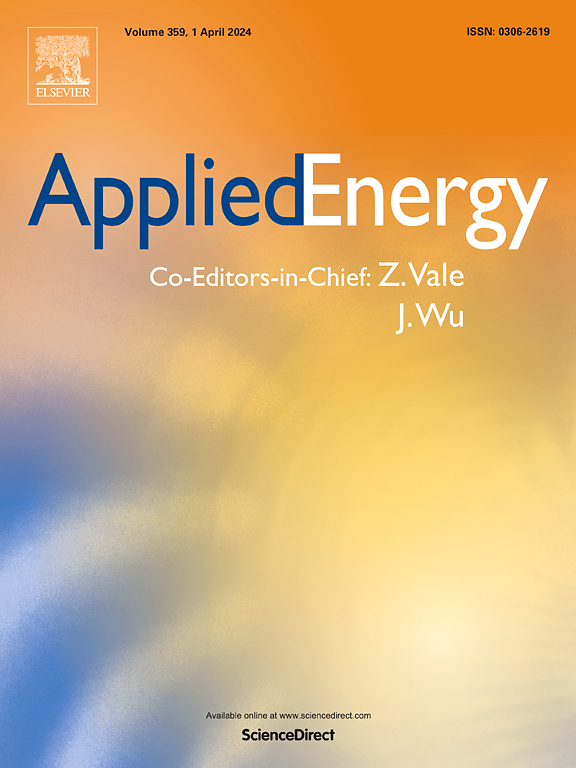液体空气和压缩空气储能与固体/液体/混合热能存储(TES)的综合热经济评估:解决空气和TES材料存储成本影响
IF 11
1区 工程技术
Q1 ENERGY & FUELS
引用次数: 0
摘要
本研究对液态空气储能(LAES)和压缩空气储能(CAES)进行了全面的热经济学评估,重点关注了能源和储能、材料密封和TES单元的成本影响。通过解决之前的不确定性,我们的目标是使能源部门能够做出明智的决策。调查揭示了CAES和LAES系统之间的显著空间差异。CAES为压缩空气储存器(CAS)分配了相当大的空间,而LAES则将类似的体积用于TES单元容器,如液体空气储罐(LAT)。当考虑到影响能量密度的所有空间因素时,LAES表现出令人印象深刻的能量密度优势,超过CAES 6.9倍。在对储气库的评估中,我们强调了缓冲气分析对地下储气库(UG)的重要性,强调了盐穴的成本效益,特别是在CAES的短期发电中。相比之下,我们对LAES的分析表明,在功率容量较低的系统中,成本显著增加,特别是那些低于400兆瓦的系统。关于各种TES材料的成本影响,我们的研究结果揭示了不同的模式。对于CAES来说,固体TES材料在低于110 bar的压力下具有成本效益,而液体TES材料更适合超过这个阈值。在LAES中,动态不同。固体TES材料的成本要高得多,这使得混合TES成为一个有吸引力的选择,特别是在150/90 bar的充放电压力下,可以降低14%的成本。我们的综合评估表明,由于广泛的TES材料和空气储存要求,LAES的储存成本大大增加。经济分析表明,两种技术的非存储设备成本相似,但LAES面临的材料遏制成本高出3.1倍,导致总成本比CAES高65%。CAES和LAES之间的选择取决于项目的具体需求和预算限制,LAES具有非凡的潜力,特别是在地质限制影响CAES可行性的地区。本文章由计算机程序翻译,如有差异,请以英文原文为准。
A comprehensive Thermoeconomic assessment of liquid air and compressed air energy storage with solid/liquid/hybrid thermal energy storage (TES): Addressing air and TES material storage cost impacts
Present study undertakes a comprehensive thermoeconomic evaluation of Liquid Air Energy Storage (LAES) and Compressed Air Energy Storage (CAES), with a focus on cost implications concerning exergy and energy storage, material containment, and TES units. By addressing previous uncertainties, we aim to enable informed decision-making in the energy sector.
The investigation unveils a significant spatial disparity between CAES and LAES systems. CAES allocates considerable space to Compressed Air Storage (CAS), while LAES dedicates a similar volume to TES unit containment as Liquid Air Tanks (LAT). When considering all spatial factors affecting energy density, LAES demonstrates an impressive energy density advantage, surpassing CAES by a factor of 6.9. In the assessment of air storage, we emphasized the importance of cushion gas analysis for underground storage (UG), highlighting the cost-effectiveness of salt caverns, especially for short-term power generation in CAES. In contrast, our analysis of LAES shows that costs increase significantly in systems with lower power capacities, particularly those below 400 MW. Regarding the cost impact of various TES materials, our findings reveal distinct patterns. For CAES, solid TES materials are cost-effective for pressures below 110 bar, while liquid TES materials are more suitable beyond this threshold. In LAES, the dynamics differ. Solid TES materials exhibit considerably higher costs, making hybrid TES, especially at charging and discharging pressures of 150/90 bar, an attractive option, offering a 14 % cost reduction.
Our comprehensive evaluation highlights substantially higher storage costs for LAES due to extensive TES material and air storage requirements. Economic analysis indicates that non-storage equipment costs are similar for both technologies, but LAES faces a 3.1 times higher cost for material containment, resulting in a 65 % higher total cost than CAES. The choice between CAES and LAES depends on project-specific needs and budget constraints, with LAES showing exceptional potential, particularly in areas where geological limitations affect CAES feasibility.
求助全文
通过发布文献求助,成功后即可免费获取论文全文。
去求助
来源期刊

Applied Energy
工程技术-工程:化工
CiteScore
21.20
自引率
10.70%
发文量
1830
审稿时长
41 days
期刊介绍:
Applied Energy serves as a platform for sharing innovations, research, development, and demonstrations in energy conversion, conservation, and sustainable energy systems. The journal covers topics such as optimal energy resource use, environmental pollutant mitigation, and energy process analysis. It welcomes original papers, review articles, technical notes, and letters to the editor. Authors are encouraged to submit manuscripts that bridge the gap between research, development, and implementation. The journal addresses a wide spectrum of topics, including fossil and renewable energy technologies, energy economics, and environmental impacts. Applied Energy also explores modeling and forecasting, conservation strategies, and the social and economic implications of energy policies, including climate change mitigation. It is complemented by the open-access journal Advances in Applied Energy.
 求助内容:
求助内容: 应助结果提醒方式:
应助结果提醒方式:


